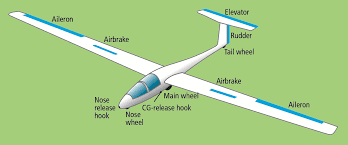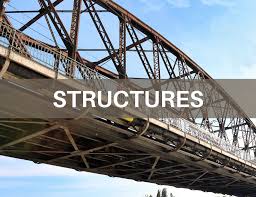
Graceful Soaring: The Magic of Gliders
The Magic of Gliders
Gliders, also known as sailplanes, are a fascinating type of aircraft that soar through the skies with grace and efficiency. Unlike traditional planes, gliders do not have engines; instead, they rely on the forces of nature to stay aloft.
One of the most remarkable aspects of gliders is their ability to harness rising air currents to gain altitude and stay airborne for extended periods. Skilled pilots can navigate these invisible streams of air, known as thermals, ridge lift, or wave lift, allowing them to cover great distances and reach impressive heights.
Gliding is not just about flying; it’s about experiencing the freedom and beauty of soaring through the air like a bird. The silence and serenity of gliding create a unique and peaceful flying experience that is truly magical.
Many enthusiasts are drawn to gliding for its simplicity and purity. With no noisy engines or distractions, pilots can focus on the art of flying and connecting with nature in a profound way.
Whether you’re a seasoned pilot or someone looking to try something new, gliding offers an exhilarating adventure unlike any other. So next time you look up at the sky and see a glider gracefully gliding by, take a moment to appreciate the magic of flight in its purest form.
Essential FAQs About Gliding: From Safety and Training to Popular Locations
- What is a glider?
- How does a glider stay in the air without an engine?
- Is it safe to fly in a glider?
- How long can a glider stay in the air?
- What training is required to become a glider pilot?
- Can anyone fly a glider?
- What are the different types of lifts that help gliders stay airborne?
- Are there competitions for gliding enthusiasts?
- What are some popular locations for gliding activities?
What is a glider?
A glider, also known as a sailplane, is a type of aircraft that flies without an engine. Instead of relying on traditional propulsion methods, gliders use the forces of nature, such as rising air currents like thermals, ridge lift, or wave lift, to stay airborne. This unique flying machine allows pilots to soar through the skies with grace and efficiency, experiencing the freedom and beauty of flight in its purest form. Gliding offers enthusiasts a serene and peaceful flying experience, devoid of noisy engines and distractions, making it a popular choice for those seeking a more tranquil and connected way to explore the skies.
How does a glider stay in the air without an engine?
A glider stays in the air without an engine by harnessing natural forces and aerodynamic principles. Unlike powered aircraft, gliders rely on rising air currents, such as thermals, ridge lift, and wave lift, to stay airborne. Skilled pilots can locate and utilize these invisible streams of rising air to gain altitude and extend their flight time. By strategically navigating these air currents, a glider can maintain its altitude and even climb to higher levels. This efficient use of natural forces allows gliders to soar through the skies with grace and precision, showcasing the beauty and simplicity of unpowered flight.
Is it safe to fly in a glider?
Flying in a glider is generally considered safe when proper safety measures are followed. Gliders are designed and maintained to high standards, and pilots undergo rigorous training to ensure they can handle various flying conditions. Additionally, gliding clubs often have strict safety protocols in place to mitigate risks. While all forms of aviation carry some level of risk, many people find gliding to be a thrilling and rewarding experience that can be enjoyed safely with the right precautions in place.
How long can a glider stay in the air?
One frequently asked question about gliders is, “How long can a glider stay in the air?” The answer to this question varies depending on various factors such as weather conditions, pilot skill, and the type of glider being used. In optimal conditions, experienced glider pilots have been known to stay airborne for several hours, with some record-breaking flights lasting over 24 hours. By exploiting rising air currents and employing efficient flying techniques, gliders can achieve remarkable endurance in the sky, showcasing the impressive capabilities of these silent soaring machines.
What training is required to become a glider pilot?
To become a glider pilot, aspiring individuals typically undergo specialized training that covers both theoretical knowledge and practical flying skills. The training process usually includes classroom instruction on topics such as aerodynamics, meteorology, navigation, and flight regulations. In addition to theoretical learning, students receive hands-on experience with flying techniques, take-off and landing procedures, and emergency protocols. Depending on the country and aviation authority regulations, aspiring glider pilots may need to complete a set number of flight hours under the supervision of a certified flight instructor before obtaining their pilot’s license. Continuous training and practice are essential for mastering the art of gliding and ensuring safe and enjoyable flights in the skies.
Can anyone fly a glider?
Flying a glider is an exciting and rewarding experience that many people dream of trying. While anyone can learn to fly a glider, there are certain requirements and training needed to do so safely and legally. To become a glider pilot, individuals must undergo proper instruction from certified flight instructors, pass theoretical and practical exams, and meet certain medical standards. With dedication, commitment, and the right training, almost anyone can fulfil their dream of soaring through the skies in a glider.
What are the different types of lifts that help gliders stay airborne?
Gliders rely on various types of lifts to stay airborne and navigate the skies with precision. One common lift is thermal lift, which occurs when the sun heats the ground, causing pockets of warm air to rise. Glider pilots skillfully locate these thermals to gain altitude and extend their flight time. Another type of lift is ridge lift, created when wind encounters a hill or mountain, forcing it to rise and generate an upward force that gliders can ride along. Additionally, wave lift occurs when wind flows over mountains in a repetitive pattern, creating standing waves that gliders can use to soar to great heights. These different types of lifts showcase the ingenuity and skill required for glider pilots to master the art of soaring through the skies effortlessly.
Are there competitions for gliding enthusiasts?
For gliding enthusiasts, competitions are a thrilling and integral part of the sport. Gliding competitions allow pilots to showcase their skills, strategy, and precision in navigating challenging tasks such as racing around designated courses or flying long distances. These events not only test the pilots’ abilities but also foster camaraderie among participants and promote the advancement of gliding techniques. Competitions provide a platform for enthusiasts to push their limits, learn from each other, and celebrate the art of gliding in a competitive yet friendly atmosphere.
What are some popular locations for gliding activities?
When it comes to gliding activities, there are several popular locations around the world that offer ideal conditions for soaring through the skies. From the stunning peaks of the Alps in Switzerland to the vast expanses of the Australian Outback, gliders can be found gracefully navigating diverse landscapes. Closer to home, places like the Peak District in England and the Scottish Highlands provide breathtaking backdrops for gliding adventures. Whether you’re seeking mountain thermals, coastal breezes, or flatland soaring, there is a gliding destination to suit every preference and skill level.



